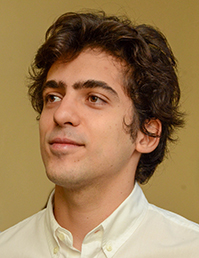Lucas VAROTO received the 2025 Academic Thesis Prize for his research work among PhDs graduating in 2024.
Thesis Title: Microstructural Optimization of Cu-Cr alloys for electrical contacts in vacuum interrupters.

Undeniably, reliable and decarbonized solutions for current interruption applications to protect critical electrical installations are crucial to meet the new requirements of the contemporary energy transition. Vacuum interrupters are a key component in medium-voltage systems (1–50 kV), the voltage range used for urban electricity distribution. The performance of vacuum interrupters is directly linked to their electrical contacts, which are the core of the interrupter, as they ensure current flow under normal conditions and interrupt current during short circuits or overvoltage events.
Cu-Cr alloys with a Cr-content between 25 and 50 wt%Cr are widely used as electrical contacts in vacuum interrupters due to their desirable combination of mechanical, thermal, and electrical properties. The microstructure of these composites varies significantly depending on the manufacturing process, leading to different properties and thus varying performances. However, the microstructure-property relationships of these composites have not yet been clearly established. Moreover, despite the interest in Cu-Cr composites, the design and optimization of their microstructures are constrained by the limitations of traditional manufacturing methods (sintering and casting).
Consequently, this study pursued two scientific objectives:
i) To identify the first order microstructural features that govern the mechanical, electrical, and thermal properties of these complex materials;
ii) To propose new microstructures to optimize these properties by leveraging the out-of-equilibrium solidification conditions offered by additive manufacturing (AM).
A multi-scale study of the sintered and cast Cu-Cr microstructures and properties was conducted. X-ray microtomography coupled with machine learning-assisted image analysis was used to accurately identify the microstructure in 3D. This revealed that Cu/Cr interfaces are a first order microstructural feature to analyze, as they affect strengthening mechanisms (mechanical properties) and conduction (electrical and thermal conductivities). Mechanical testing showed that porosity at the Cu/Cr interfaces reduces the efficiency of several strengthening mechanisms, such as load transfer between Cu and Cr phases and dislocation generation in the Cu matrix due to the thermal expansion mismatch between Cu and Cr. Measurements of the composites’ conductivities revealed differing behaviors in electrical and thermal conduction, a surprising result given classical theories of conduction in metals. The use of analytical and full-field modeling to simulate conduction properties helped clarify which microstructural characteristics significantly influence conduction in Cu-Cr composites, such as interface resistance and impurities in Cu.
This multi-scale study demonstrated that a key strategy for optimizing the multifunctional properties of Cu-Cr electrical contacts lies in the ability to produce dense and fine microstructures. This challenge could potentially be met under rapid solidification conditions. Powder bed additive manufacturing (AM) can now meet such demands, representing a breakthrough from conventional processes. Therefore, the feasibility of producing Cu-Cr composites by electron beam powder bed fusion AM was investigated, using mixed Cu and Cr powders (in situ alloying). This process enables the metastable miscibility gap of the binary Cu-Cr system to be reached, triggering liquid phase separation (like oil in water) and yielding a homogeneous and very fine microstructure. The properties of this new microstructure were then measured, showing improved mechanical, electrical, and thermal properties, a result never before reported in the literature for these alloys. In the longer term, additive manufacturing may also allow for the development of complex geometries and custom-designed materials with controlled microstructures.
Key words: Copper alloys, Metal matrix composites, Microstructure Design, Additive Manufacturing, Electrical Contacts
Doctoral School: ED I-MEP² - Engineering - Materials, Mechanical, Environment, Energetics, Processes, Production
Research laboratory: Science et Ingénierie des Matériaux et Procédés (SIMaP - CNRS/UGA - Grenoble INP-UGA)
Thesis supervision: Jean-Jacques BLANDIN, Guilhem MARTIN, Sophie ROURE and Antony PAPILLON
> To find out about all the 2025 thesis prizes